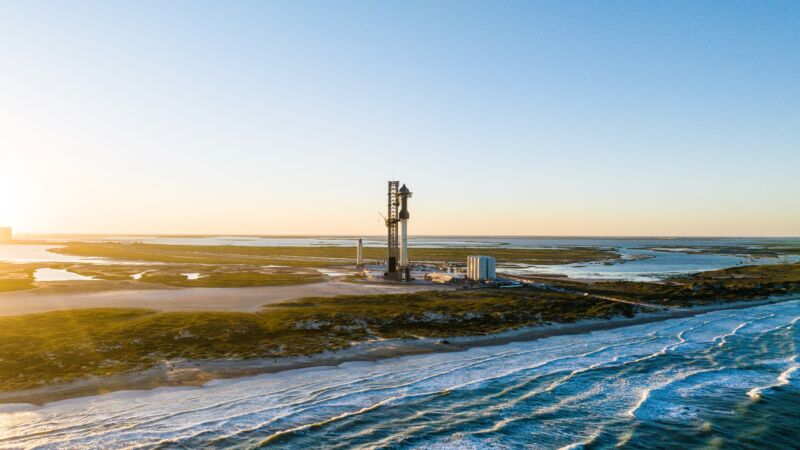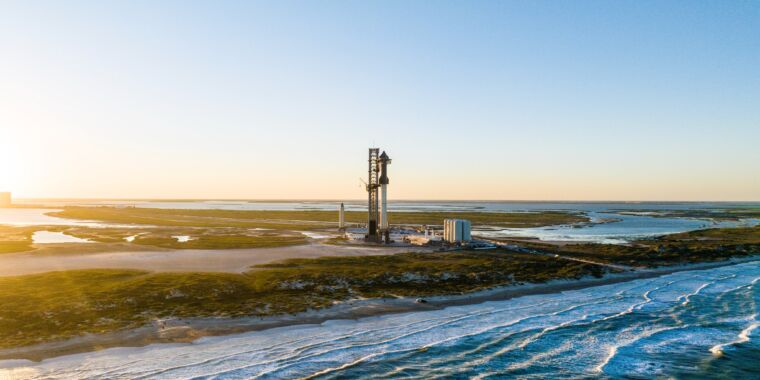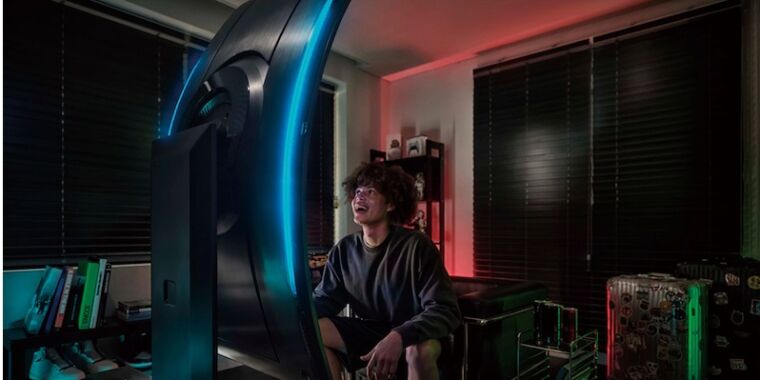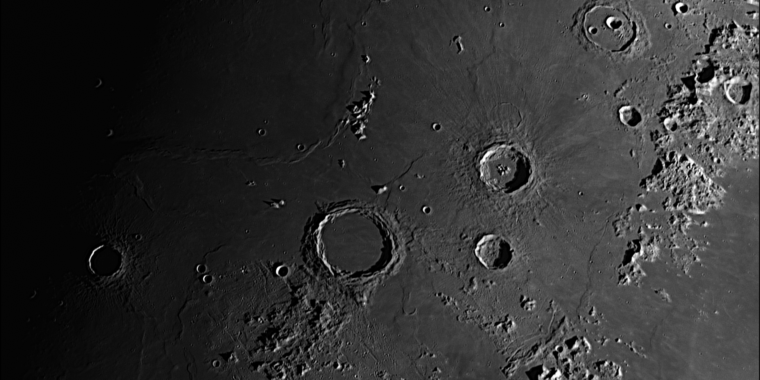
The Federal Aviation Administration approved a commercial launch license Wednesday for SpaceX to fly its second full-scale Starship rocket as soon as Friday, seven months after the giant vehicle’s first test flight.
“The FAA has given license authorization for the second launch of the SpaceX Starship Super Heavy vehicles,” the FAA said in a statement. “The FAA determined SpaceX met all safety, environmental, policy and financial responsibility requirements.”
The nearly 400-foot-tall rocket is scheduled to lift off from SpaceX’s privately owned Starbase spaceport in South Texas during a two-hour launch window opening at 7 am CT (13:00 UTC) Friday, shortly after sunrise on the Texas Gulf Coast. The weather forecast looks favorable for launch Friday morning, but the launch team will evaluate upper-level wind conditions throughout the countdown before giving the green light for liftoff.
If SpaceX executes its flight plan perfectly, the Super Heavy booster will fire its 33 methane-fueled Raptor engines for more than two-and-a-half minutes, guiding the stainless steel rocket through the atmosphere over the Gulf of Mexico. Then, the booster will jettison to attempt a controlled descent into the Gulf of Mexico, while the Starship upper stage, with six Raptor engines, will light to accelerate to nearly the velocity required to enter a stable orbit. Starship will coast about three-quarters of the way around the world before plunging back into the atmosphere for a targeted splashdown in the Pacific Ocean north of Hawaii.
But there are plenty of risks throughout the flight profile. Ars recently reported on these unknowns, ranging from engine reliability to the redesign of the rocket’s stage separation mechanism.
SpaceX officials have said the second Starship rocket has been ready for flight since September, but the launch remained grounded while federal regulators completed reviews of the safety and environmental impacts of changes SpaceX has made since the first Starship test flight on April 20. Although it ended about four minutes after liftoff following a series of engine failures, SpaceX officials described the flight as a success. It was, after all, fundamentally a learning exercise, and SpaceX learned a lot.
“No significant environmental changes”
Since April, SpaceX has upgraded Starship’s launch facility in South Texas with a water deluge system to cushion the launch pad from the extreme heat and acoustic energy of the rocket’s 33 main engines. Engineers expect this change will prevent the recurrence of damage to the pad observed during the first Starship launch, which blasted away blocks of concrete from beneath the launch mount and spread the debris across hundreds of acres. Clouds of sand fell several miles from Starbase, but none of this material was hazardous, federal officials wrote in their updated environmental review published Wednesday, several hours before the FAA issued the launch license for the second Starship test flight.
Following the April test flight, SpaceX engineers improved shielding in the booster’s engine compartment and tightened bolts on engine manifolds to eliminate fuel leaks observed during the April launch.
SpaceX is also introducing two changes to the Starship design that were already in the works before April. Those are a switch from hydraulic to electrically actuated thrust vector controls for steering of Starship’s 33-engine Super Heavy booster, and a modified stage separation method that will involve igniting the engines on the Starship upper stage at the same time as separation of the Super Heavy booster, rather than separating these key events by an interval of several seconds.
For this test flight, SpaceX added a new 6-foot-tall (2-meter) vented interstage ring between the Super Heavy booster and the Starship upper stage, a component that will redirect hot exhaust from the six upper-stage engines away from the top of the booster as it falls away. This extra piece will make the fully stacked Starship rocket slightly taller than the one that flew earlier this year.
However, it was the water deluge system at the Starship launch pad that took the longest for federal regulators to assess in their launch licensing process. The FAA completed a safety review of SpaceX’s application for a new launch license last month after SpaceX implemented 57 corrective actions to address the problems it encountered on the April flight. An environmental review took longer to complete.
A pair of hot-fire tests of the Super Heavy booster in August provided important data on the environmental impact of the deluge system, which flows up to 358,000 gallons of fresh water onto the launch pad through a channel built in a massive steel plate installed under the pedestal the rocket sits on before launch. The water flowed onto the launch pad during both engine test firings, and scientists took samples of the water outflow to scan for hazardous or toxic constituents.








